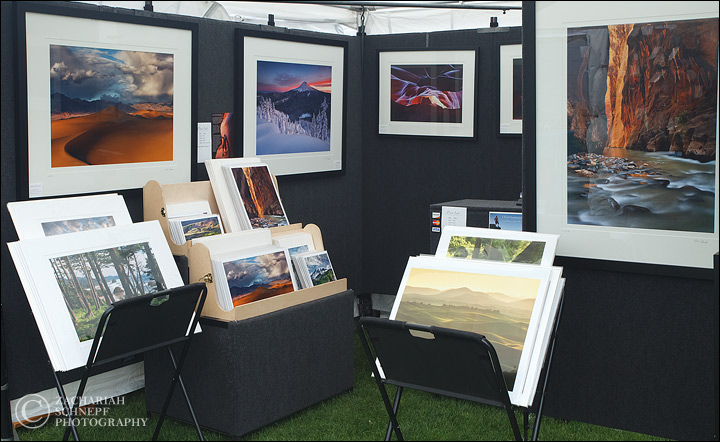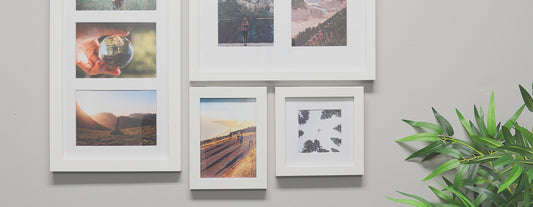
Tips for Selling Your Artwork
For an artist, creating a piece is a personal and magical experience. For those who want to share that magic with others, selling artwork can be a lot like parting with a loved one. You dedicated so much time and energy into creating it, but sharing it with others can bring as much joy as making it did.
As a resource for supplies that help artists sell their artwork, we strive to be an educational resource as well. Whether you’re a first time or seasoned seller, this post aims to offer tips for where to sell, what to sell, and how to sell your artwork.
Where To Sell
-
Online
Perhaps the most popular avenue for selling artwork is online. It is an easy way to get your art out there and reach a large audience. Many websites offer a quick and easy shop set-up process with low service fees. With the help of online marketing and branding, you can be on your way to making an income off of doing what you love: making art. Here are some sites we love:
Etsy
Etsy is a popular selling platform for artists, crafters, and everything in between! The site offers shipping and marketing tools to help manage these aspects of the selling process, and only charge $0.20 per listing! Click here to read more about selling on Etsy.
Amazon
eCommerce giant Amazon has a section for artists and makers called Amazon Handmade. The marketplace features a variety of items, including art by independent artists. This option does have a 15% fee charged per sale, and requires an application process. Click here to read more about selling on Amazon Handmade.
FineArtAmerica
FineArtAmerica is a 100% commission free site that offers membership plans for artists to take advantage of their services, including a free plan! The site also offers helpful features including the ability of integration with your website. Click here to read more about selling on FineArtAmerica.
Society6
Society6 is another great platform for selling your artwork if you’re looking for more of a hands-off approach to getting your art out there. They fulfill, print, and ship every order, with the artist earning 10% of the sale. Click here to read more about selling on Society6
Your Own Website
If you want full control of your art business, creating your own website can ensure just that. Plenty of sites, such as Shopify, SquareSpace, and WordPress, offer easy, user friendly website building with support and personalized URLs at a low monthly cost.
-
Sell Locally at Art Shows, Festivals, Markets, etc.
This method can be a lot of work and money to accomplish, but if done right it can pay off. You can find art shows and festivals online or through other artists to attend, and from there it’s important to research the event’s requirements, materials you will need for your booth, and…

What To Sell
The obvious answer here is, well, art. But you may not want to sell just any of your art. It’s important to decide which pieces you’d like to sell and at what price point. To do this, it is highly recommended that you attend the show or festival you’d like to sell at to get a feel for the amount of patrons, art quality and price points, etc. It will benefit you to know what you're walking into, and how you can best bring in business at the location.
Next is deciding what to sell at the show or festival. Looking at other art being offered there will help you determine what will sell best. For example, if there are many booths selling landscape paintings or photos, you may want to choose the pieces you have that will stand out the most in your booth, and offer a variety to patrons. If you too offer landscape pieces, it may be best to offer your other pieces of different subjects at this particular event.
Another way to stand out is to sell yourself. Welcome patrons with open arms, engage in conversation with them, and see how you can best serve them while they visit your booth or room.
How To Sell
If you’re selling online, make sure you invest time into interacting with buyers, prospective buyers, and networking with other artists online. Creating a personal relationship with buyers is not only important from a personal standpoint, but also from a selling standpoint. Reviews go a long way online as prospective buyers often look to them to make their final decision on whether or not they will purchase from you. Offering top notch service and incentives for sharing their experience with you can help your business grow exponentially.
Another thing to consider is the physical appearance of the art you are selling. The piece itself is beautiful, and the packaging you choose to sell it in can either enhance or detract from it. This part of the selling process is where we come in. With a wide selection of photo mats, picture frames, and mounting supplies, our goal is to make this step as easy as possible for you. Matting or framing the art you are selling gives it a finished, ready to be displayed look. This will also protect the art during transportation/shipment. If possible, offer your artwork with the option of having it just matted or matted and framed. This is easier for selling online as opposed to at festivals and art shows, but allows the customer to decide if they’d like to find their own frame to display the piece in.
For this same reason, sticking with neutral colors such as black and white for your mat board and frame can also help make the piece versatile for any space, and therefore more likely to sell. This doesn't mean you can't get creative with the way you display the piece, just make sure you do it in a way you know your audience will appreciate and want to display in their own homes.

If you’d rather sell the artwork by itself, a crystal clear bag can help protect the print or painting from dirt, dust, fingerprints, etc.
Finally, if you’re selling online it's important to invest in packaging that will ensure the art arrives in mint condition to the buyer. This will vary depending on what you’re selling and in what quantity, so research the best carriers, their shipping policies, packaging, etc. to find the right option for you and your artwork.
Have any tips you’d like to add for first time art sellers? Leave them in the comments below!








